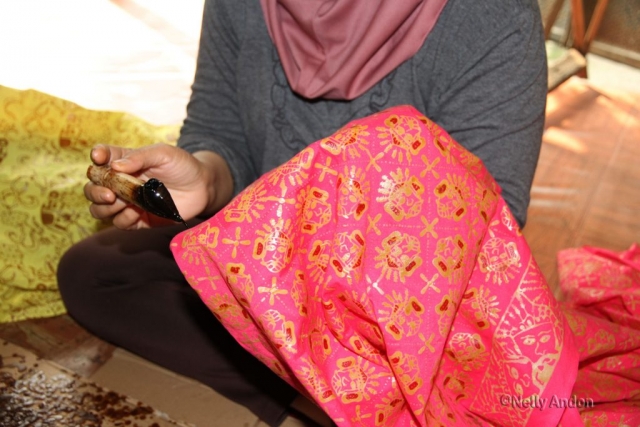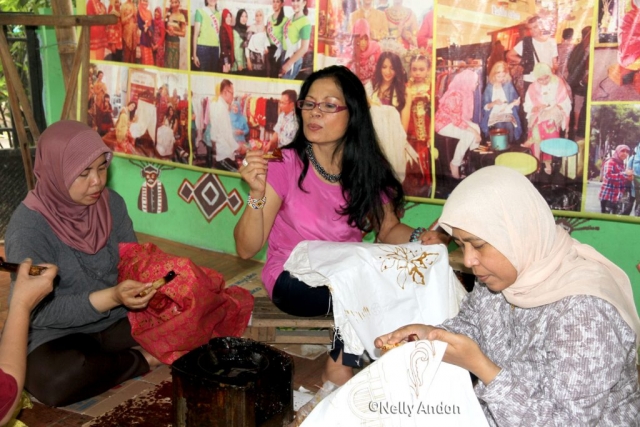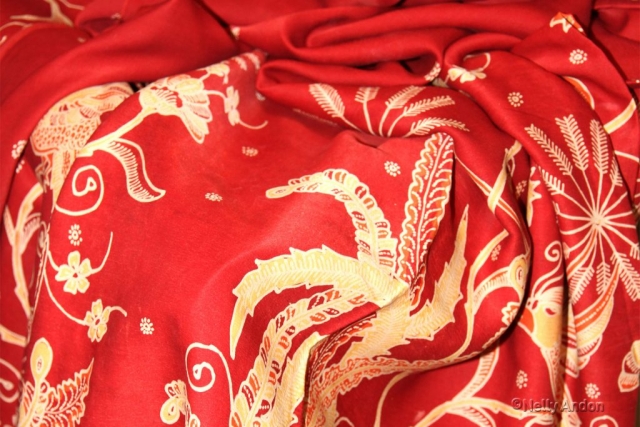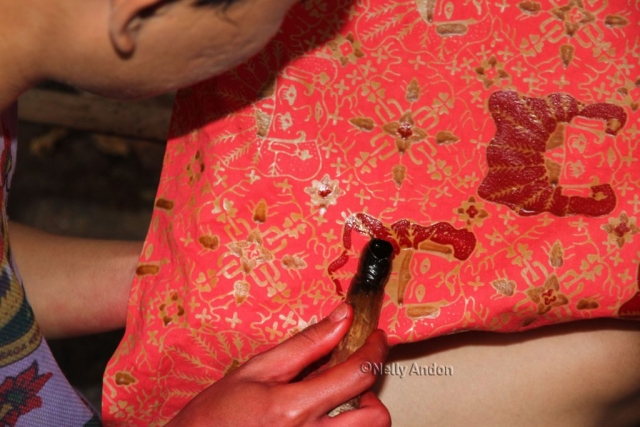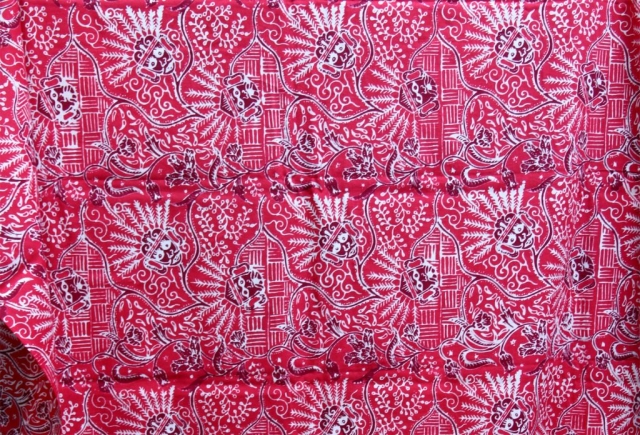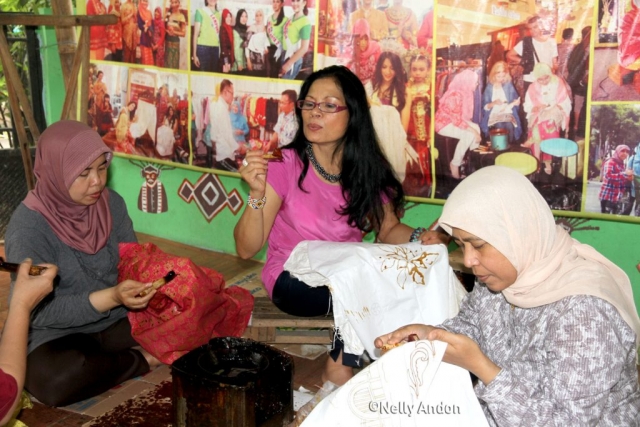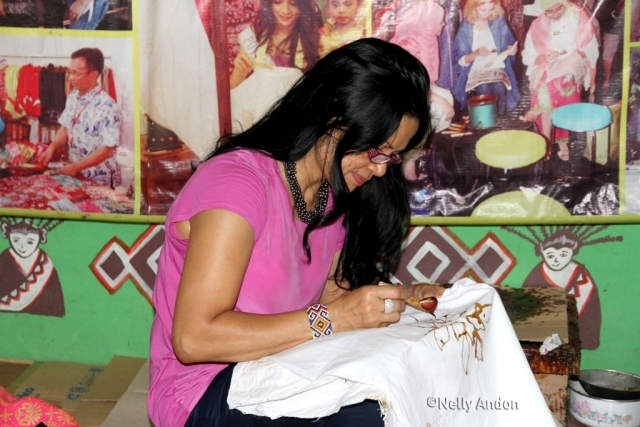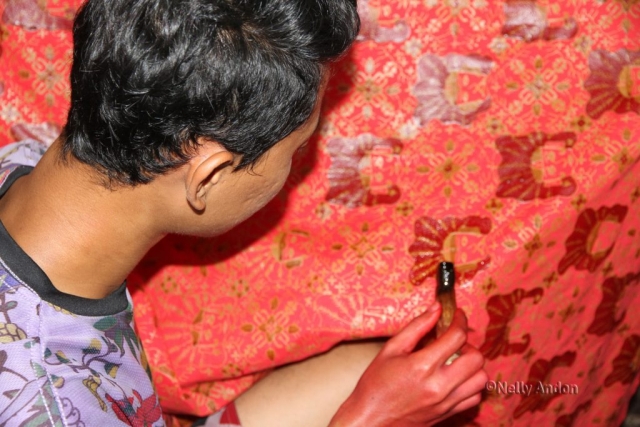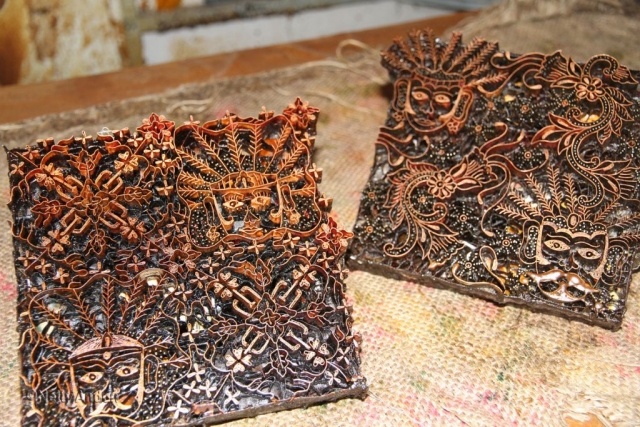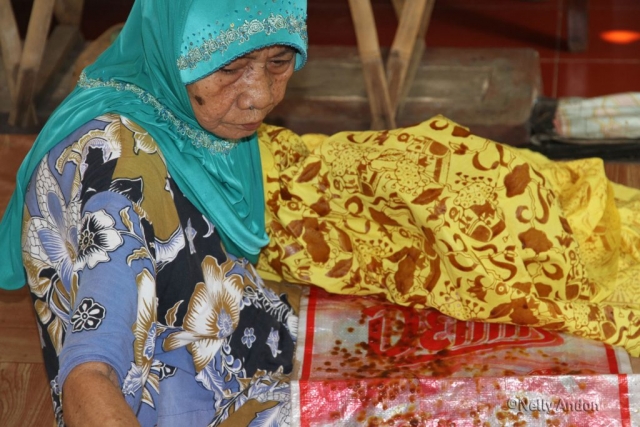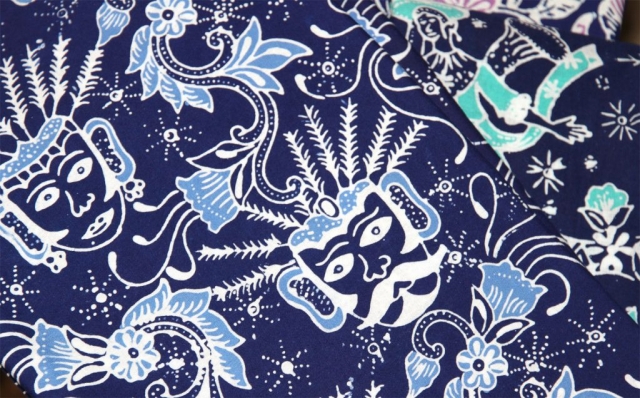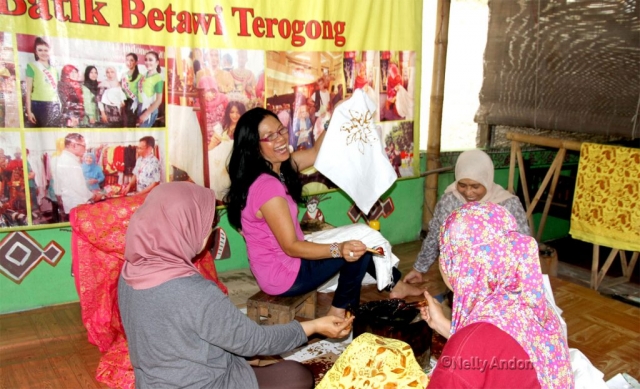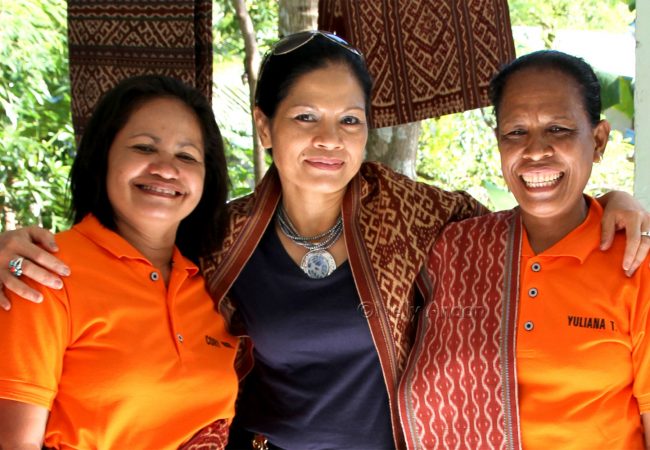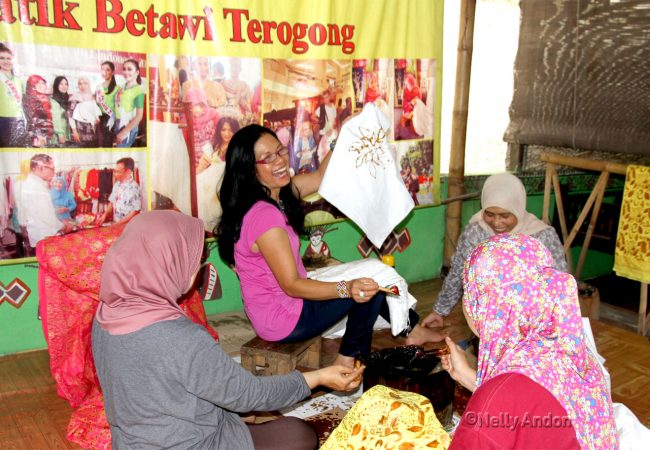
Learning to become a Batik artist – at Terogong Batik Studio, Jakarta
I met Siti Laila, the owner of Batik Terogong Betawi in cyberspace just a few months prior to my visit to her studio. She inspired me on her journey to revive the lost Jakarta Batik. Well, Jakarta batik wasn’t exactly lost, but it was on a brink of extinction and it needed a braveheart to rescue it and bring back to the list of Indonesian Batik. Siti did just that.
On my visit to Jakarta this year, I arranged to meet her and to see her batik studio in person. The Terogong village where she lives surrounded by a fairly packed housing estate, schools, mosques and a few typical Betawi warung (corner shops). Siti told me that most of the people live here are descended from the same great-great-grandparents, so they are related, in some ways or another. Terogong is a typical Betawi village, it reminds me of Jakarta when I first saw it when I migrated from Sumatra with my family in the late 70s. Though Jakarta is developing fast, a few Betawi villages do remain intact with very little changes to their surrounding. Sadly, these villages disappearing slowly due to high demand for empty lands for building development purposes.
Jakarta was hot and humid on the day of my visit there, in reality, August is just the middle of the dry season it could’ve had been the coolest month of the year in Indonesia, but with global warming affecting the climate fairly badly, it is hard to tell when the dry or wet season exactly now. Jakarta is always hot these days and with the severe traffic jam at all hours, a journey in the capital is always horrendously tiring. I took me over 2 hours to reach Terogong from where I was based, a journey which would have taken only 25 minutes in a normal traffic, whatever normal is in Indonesia. It is probably best to say a journey without traffic jam at all. After a continuous grumble as always when I am en route in Jakarta, I reached Terogong with excitement. Siti welcomed me with some lovely hot tea and banana fritters which made me feel very at home. She took me around the studio and briefed me on things I need to know. On a visit like this, I am always curious and asked more questions and Siti was very happy to share her stories with me.
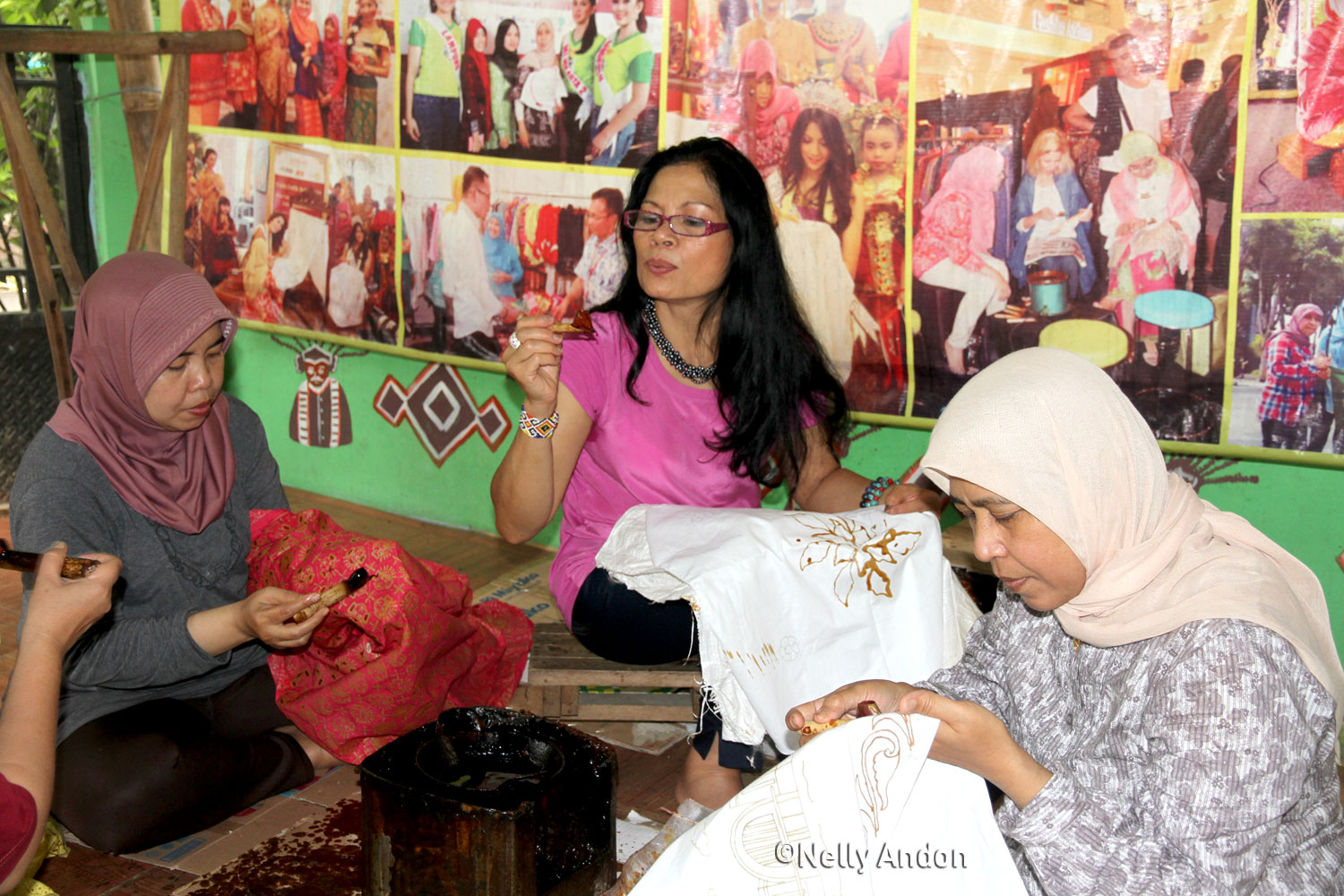
I sat down with the ladies from the Terogong studio and began canting (drawing the pattern with wax) on a piece of small cloth. I always feel very blessed with a very special attitude “yes I can do that”, and too much confidence to always believe that “I can do that myself” without much training. At home, I built things, brick laying with a DIY book, building a deck at the back of my house with guidance from YouTube, upcycling furniture with success, arranging a dinner party with newly tried recipes, well, not so on this occasion. Drawing batik requires steady hands, and for this, it requires long practices. Of course, it is great if you have the knack for it, but for this type of work we just need to be a bit humble on our self-believe, or we will end up with dribble pattern on or work forever.
I am proud to say, that my day with Siti and her team, was truly amazing. It provided me with a new set of perspective on Indonesian Batik. Terogong Studio is where I truly learnt how to do batik canting properly and learnt the processes step by step, and truly understand the basic. Here in Terogong studio, they produced Batik tulis and Batik cap.
- Batik tulis is where the patterns are 100% drawn and cant (waxed) by hand.
- Batik cap is where the patterns are stamped using the batik metal stamps, and part of these designs are waxed by hand.
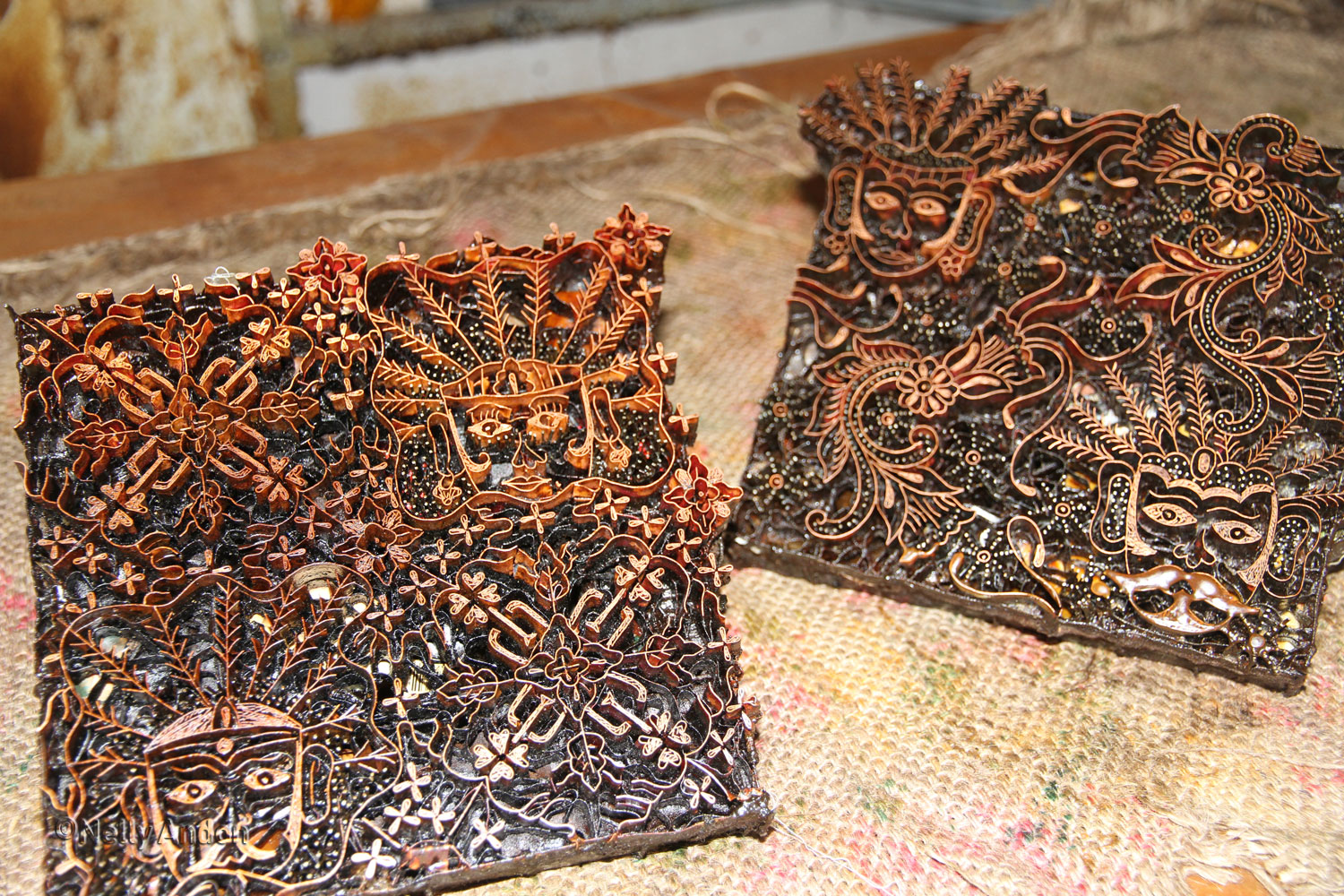
Both processes are considered as handcrafted textiles. I acquired a few of Terogong Batik during my visit there, both batik tulis and batik cap, and these items can be purchased in my online shop. I will be arranging Wastra Travels to Indonesia from early 2018, and I have put Terogong Studio in the agenda, as this place holds a lot of history of the capital city and their work to revive Batik Betawi and to preserve the lost Betawi culture is in need of great support from Batik enthusiasts from around the globe.
If you like this article, feel free to leave me a comment, or contact me for details of our next visit there. To view the gallery below, click on one of the images to take you to full view. Thank you for your visit today.
PLEASE VIEW MY GALLERY BELOW, TO SEE LARGER IMAGES I CAPTURED FROM TEROGONG BATIK STUDIO.
